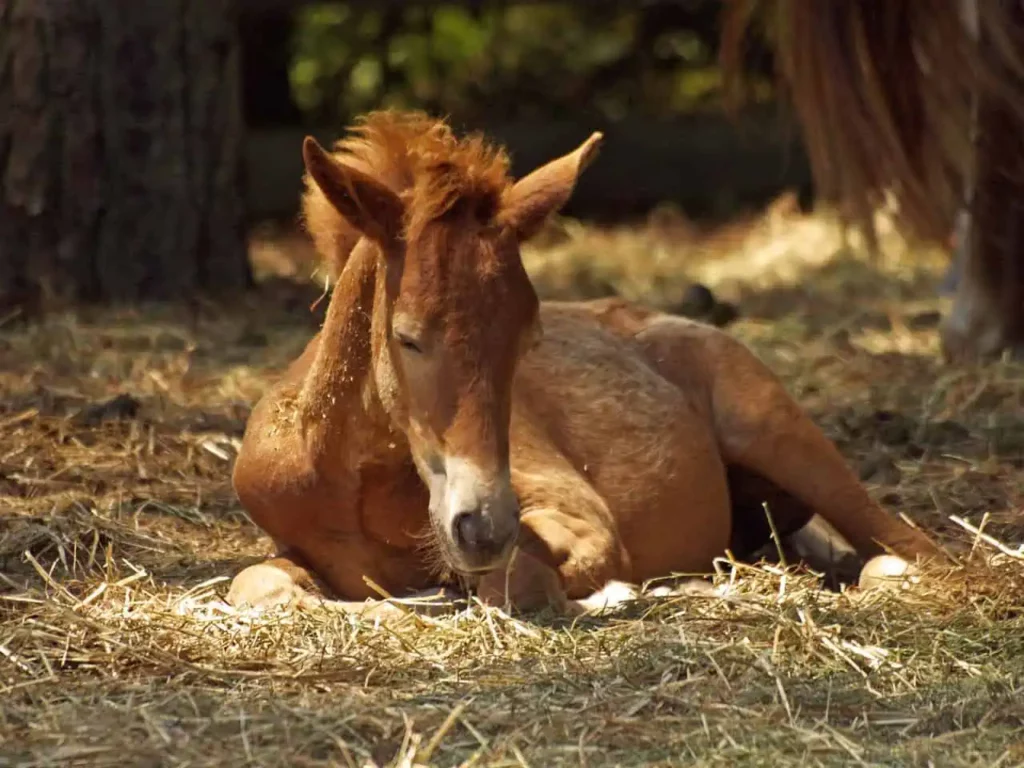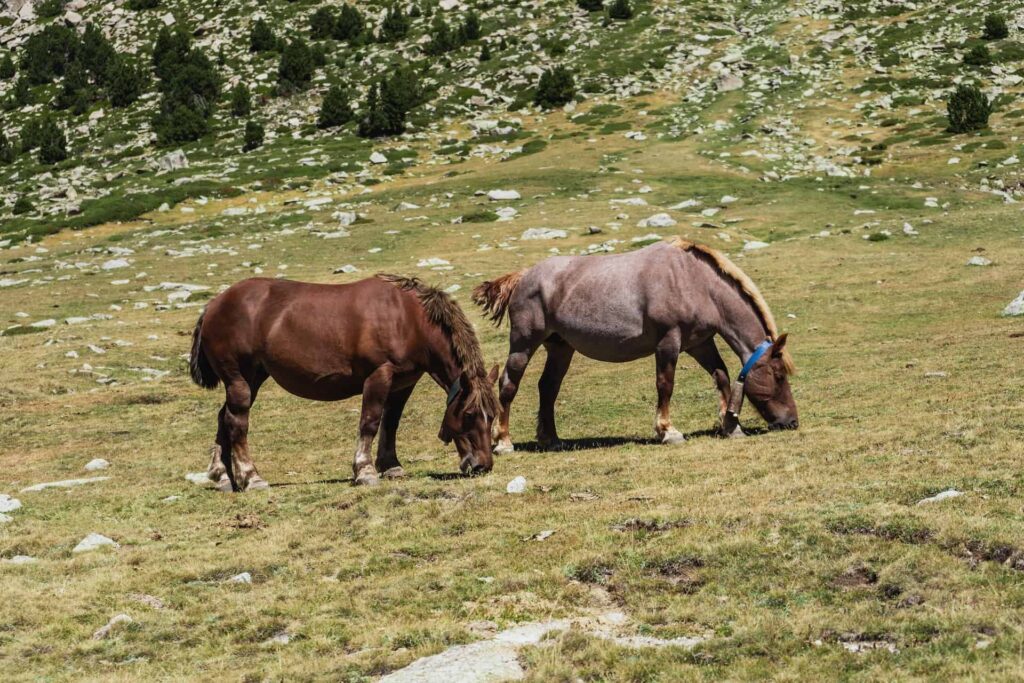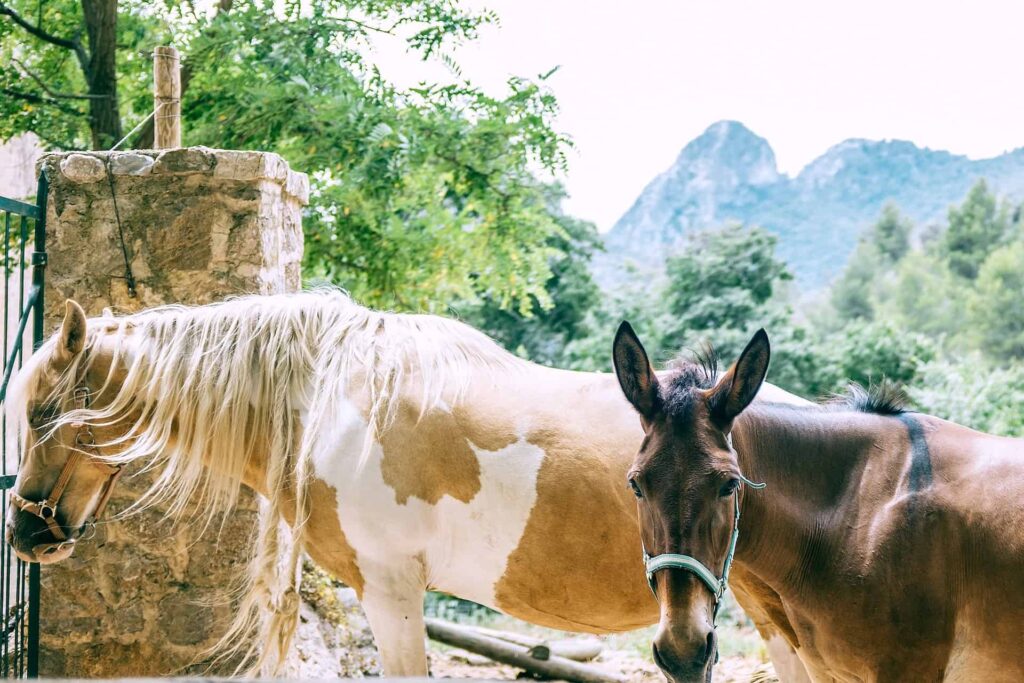Mares and foaling represent a critical aspect of equine management and breeding. They encompass a wide range of practices aimed at ensuring the health and well-being of both the mare and her offspring. The mare’s reproductive cycle sets the stage for successful breeding and foaling.
Key to this process is understanding the physiological changes a mare undergoes before, during, and after pregnancy. A mare’s seasonality, heat cycles, and gestation period are fundamental to breeding programs. They require meticulous attention to optimize the chances of successful conception and birth.
Foaling is a natural but complex event that necessitates careful preparation and monitoring. Recognizing the pre-foaling signs can be critical in providing the necessary assistance and ensuring safe delivery. It involves knowing when to intervene and how to care for the mare throughout the birthing process.
Post-foaling care is equally important as it affects the health of the mare and the development of the foal. Immediate postpartum care includes facilitating bonding, ensuring the foal receives colostrum, and monitoring for any complications.
Breeding mares and raising foals also involve genetic considerations, breeding strategies, and frequently asked questions about mare and foal care. This underscores the importance of knowledge and experience in equine reproduction.
Key Takeaways
- Mares’ reproductive cycles are foundational for breeding and require close observation.
- The foaling process demands attentiveness to pre-foaling signs and postpartum care.
- Successful breeding and foal-raising hinge on understanding genetics and common concerns.
Understanding the Mare’s Reproductive Cycle
Mares have a distinct reproductive cycle that horse breeders should understand to manage breeding effectively. The cycle typically begins as the days grow longer, often in January or February, signaling to the mare’s body that it is time to prepare for breeding.
Gestation Length
The average gestation length for a mare is approximately 340 days but can range between 320 to 362 days. Gestation calculators are available to estimate the foaling date based on the breeding date. However, each mare’s cycle may vary slightly.
Breeding Season
The breeding season usually starts in early spring and can run through late summer. Breeders often plan mating to result in foals born earlier in the year for competitive advantages in the racing industry.
Cyclical Phases
A mare’s cycle is divided into two key phases:
- Estrous Phase: The period when the mare is receptive to the stallion, lasting about 4-7 days.
- Diestrus Phase: The non-receptive period following estrus, typically 14-16 days.
Parturition
As parturition approaches, behavioral and physical signs can help predict the impending birth. Observing the mare closely as her due date nears is crucial for ensuring a successful foal delivery.
Pre-Foaling Preparation and Signs
Proper pre-foaling preparation and recognizing the signs of impending labor are crucial to ensuring the safety and health of both the mare and her foal.
Meticulous attention to the mare’s environment, health, and nutrition, along with diligent monitoring, can significantly enhance the chances of a successful birth.
Environmental Considerations
Foaling Location: The chosen area for foaling should be a quiet, clean, and secure place, such as a dedicated foaling stall, which minimizes stress for the mare. Bedding should be ample and comfortable, usually straw, to provide a soft landing for the foal and to assist in maintaining an adequate temperature.
- Stall Size: Ensure the stall is spacious enough (minimum 12×14 feet) to allow the mare to lie down and stretch out during birth.
- Cleanliness: A clean environment is critical to prevent infections. Regular cleaning and disinfecting of the stall are required.
Mare Health and Nutrition
It is vital that a mare’s nutrition supports the final stage of gestation and prepares her body for lactation.
A balanced diet rich in protein, calcium, and essential vitamins is imperative for the development of the foal and mammary glands.
Veterinary care, including vaccinations and attention to body condition, is necessary. The veterinarian may also recommend supplements if there’s a calcium deficiency.
- Body Condition: The mare should be neither too thin nor too overweight.
- Diet Adjustments: Increase the mare’s calorie intake as advised by a specialist to support the growing fetus.
Monitoring the Mare
Careful monitoring can help predict the onset of labor. Changes in behavior, vulvar changes, and the development of the teats and mammary glands are important signs.
The calcium concentration in the mare’s milk increases as foaling approaches, which can be tested by collecting and analyzing a milk sample.
Continual surveillance, either by a person or via a monitoring system, is crucial as the expected gestation length nears its end.
- Physical Changes: Look for the dropped abdomen and changes in abdominal symmetry.
- Milk Composition: Review milk composition and pH levels to better predict foaling time.

The Foaling Process
The foaling process is a critical event in equine reproduction, encompassing labor and delivery, marked by distinct stages of labor, unique mare behaviors, and specific mechanics involved in the delivery of a foal.
Stages of Labor
The first stage of labor is characterized by uterine contractions beginning to reposition the foal for delivery.
This stage is usually not obvious but can be identified by the mare’s nervous behavior, restlessness, and occasional sweating. It culminates with the rupture of the chorioallantois or water bag.
In the second stage of labor, the mare experiences stronger, more visible contractions. This intense period involves the foal’s actual movement through the birth canal and is marked by the appearance of the water bag, front feet, and hips.
Mare Behavior During Foaling
Throughout foaling, a mare might display anxiety, evidenced by nervous behaviors such as pacing and looking at her flank.
She may sweat and show signs of discomfort, including frequent urinating and lying down. Understanding these behavioral signs can assist in anticipating the onset of labor and ensuring timely assistance if necessary.
Foal Delivery Mechanics
The mechanics of foal delivery are both remarkable and complex.
Following the rupture of the water bag, the foal’s front feet typically emerge first, one slightly ahead of the other. The nose and head should follow, resting on top of the front legs.
Successful passage through the birth canal requires the foal to be positioned so that its hips clear the mare’s pelvis without complication, culminating in a successful delivery.
Post-Foaling Care
Post-foaling care is crucial for ensuring the health and well-being of both the mare and the foal. This care includes immediate attention to the newborn, thorough health checks, and proper management of their environment.
Immediate Newborn Foal Care
Immediately after birth, make sure the newborn foal has a clear nose and is breathing well. The foal should stand and nurse within the first few hours to receive colostrum, which is rich in antibodies.
The foaling attendant must monitor for the passage of meconium, the foal’s first feces, as retention can lead to complications.
Mare and Foal Health Checks
Both mare and foal should receive veterinarian health checks within the first 24 hours post-foaling. The mare’s placenta should be inspected for completeness, as retained fragments can cause infection.
Lactation should be established, and the mare should be checked for any postpartum issues. The foal should be assessed for congenital issues and receive appropriate vaccinations.
Managing the Foal’s Environment
The foaling stall should be clean, well-ventilated, and have sufficient bedding to keep the foal comfortable and safe.
As the foal gains strength, introducing them to a pasture or paddock allows for exercise and socialization. It’s important for the foaling attendant to regularly clean the stall and adjust bedding to maintain a hygienic environment.
Breeding and Foal Development
In equine breeding, timing and care are crucial for both the mare and the developing foal. Mares often go back into estrus shortly after foaling, which can affect the choices breeders make regarding breeding dates.
Attention to nutrition, healthcare, and proper management of both mare and foal is necessary for successful breeding outcomes and foal development.
Mare’s Postpartum Breeding
After parturition, mares may be receptive to breeding as soon as 7-15 days during the foal heat. However, breeding on this first postpartum estrus can sometimes lead to lower pregnancy rates or an increased risk of uterine infections.
Breeders and veterinarians often monitor follicular development and ovulation to determine the optimal breeding date.
Maiden mares, or those breeding for the first time, require special attention as they have not yet established a reproductive pattern. Each mare’s readiness to breed may vary, and a veterinarian’s guidance can be crucial in deciding if and when a mare should be bred postpartum.
- Veterinarian’s role:
- Assess the mare’s reproductive health post-foaling.
- Advise on timing for breeding to optimize pregnancy chances.
- Monitor for uterine infections or complications.
Foal Growth and Weaning
The initial months of a foal’s life are vital for their long-term development and health. Proper nutrition, vaccinations, and deworming schedules support a foal’s growth and immune system.
During the nursing period, foals receive critical antibodies from the mare’s colostrum, aiding in disease prevention. Weaning typically occurs between 4 and 6 months of age, requiring careful management to minimize stress on both the mare and the foal.
During this period, risks like laminitis in the mare or tetanus in the foal must be managed with vigilance.
- Care protocols:
- Nutrition Plan: Adjust the mare’s diet to support lactation; introduce foals to a balanced diet for optimal growth.
- Health Program: Regularly scheduled vaccinations and deworming for both mare and foal.
- Weaning Process: Gradual and stress-free to ensure the welfare of mare and foal.

Advanced Foaling Topics
Advancements in equine reproduction have significantly improved the ability to monitor and predict foaling, as well as manage potential complications.
Predictive Techniques and Monitoring Technologies
Predicting the onset of foaling can be critical for ensuring the readiness of veterinarians and foaling attendants.
Mammary development and changes in milk production are traditional indicators, but modern approaches have introduced commercial kits that test for changes in calcium and other electrolytes in mare’s milk, increasing the precision of predictions.
Devices like the smart halter, which monitors a mare’s behavior for signs of labor, and phone apps connected to online gestation calculators provide real-time data and alerts to caretakers.
Technological advancements have also led to specialized equipment such as alarm sutures that alert when the foal is entering the birth canal and the breakaway of fetal membranes.
When such technologies are employed, they are often used in conjunction with a controlled foaling location where the environment is prepared, including disinfecting with chlorhexidine and ensuring the availability of enema supplies for the foal, to promote optimal foaling process outcomes.
Managing Complications
Complications during the foaling process, although relatively rare, require immediate and effective management to protect both the mare and foal. Veterinarians must be skilled in recognizing the need for mechanical aids such as forceps or a fetotomy in severe cases where the foal is malpositioned.
Uterine infections post-foaling can be life-threatening, thus preventative measures like the use of chlorhexidine washes post-foaling are critical.
A critical component of post-foaling care is monitoring for signs of stress in the mare, which may indicate complications like retained fetal membranes. Close attention to the mare’s pelvic and vulvar changes can help determine normal recovery.
Rhinopneumonitis vaccinations may be important as part of prenatal care to prevent this viral challenge, which can affect the mare and foal.
Genetics and Breeding
In the scope of equine breeding, understanding the genetic foundation is paramount for predicting and enhancing reproductive success.
Maiden mares, those that have never foaled before, may experience variances in fertility that can be influenced by genetics.
Research shows that the pregnancy rate in mares can be quantified by the ratio of pregnant mares to the number of mating mares and similarly, the foaling rate by the number of mares that bore live foals in contrast to those mated Genetic evaluation in thoroughbred mares.
Breeding dates are meticulously selected and often entail consideration of the mare’s cycle as well as the expected delivery date for the foal.
Such dates are chosen to optimize the conditions for conception and the mare’s readiness to carry a pregnancy to term. Equine fertility is multifaceted, with researched factors extending to stallion age and the complex interplay of inbreeding Equine fertility effects.
In terms of well-being, vaccinations play a critical role. They help to safeguard not only the mare but also the forthcoming foal against preventable diseases.
Vaccines are integral to maintaining the health status of the breeding stock, ensuring they’re adequately protected throughout the stages of gestation. Nutrition is a vital part of mare care, with calcium and protein being core components during gestation.
Proper levels must be maintained to support the developing foal and the mare’s increased needs during this period.
Frequently Asked Questions
In this section, you will find detailed information addressing common inquiries regarding mare foaling, providing insights into preparation, signs of labor, and the care required for the mare and foal post-birth.
What are the stages of udder development in mares as they approach foaling?
Udder development in mares can serve as an indicator of impending foaling, typically occurring two to six weeks prior to birth. The process involves the mare’s udder filling with milk, initially a gradual change that becomes more pronounced as foaling nears.
How do you prepare a mare for foaling?
Preparation for foaling requires a clean and safe environment, usually a foaling stall.
Steps involve disinfecting the stall, ensuring the availability of veterinary contact information, and preparing foaling kits containing necessary items such as clean towels, iodine for the umbilical stump, and a thermometer.
What behavioral changes indicate that a mare is close to giving birth?
As a mare approaches labor, she might display behavioral changes such as restlessness, tail raising, and isolation from other horses.
Some mares may also show physical signs like muscle relaxation around the hips or waxing of the teats, where droplets of colostrum appear.
What are common complications that can occur during mare foaling?
Complications during foaling can include dystocia, a difficult birth that may require veterinary intervention.
Retained placenta is another common post-foaling complication and can lead to serious health issues, making timely vet care crucial.
At what point in pregnancy do mares typically begin to show signs of impending foaling?
Mares generally start to show signs of impending foaling one to two months before the event, with more noticeable changes like udder development and abdominal dropping occurring in the final weeks.
What post-foaling care is recommended for both the mare and the newborn foal?
After foaling, it is critical to ensure the mare passes the placenta completely. It is also important to initiate bonding with the foal.
The newborn should stand and nurse within the first few hours of life. Both the mare and foal should be monitored for any signs of illness or distress. They should also have a veterinary post-natal checkup.
Last Updated on February 27, 2024 by Nate Dewsbury



